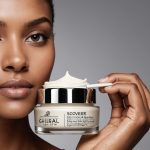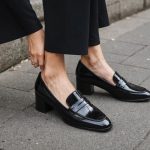Understanding the Importance of Helmet Fit
Ensuring a proper helmet fit is essential for cyclist safety. A well-fitted helmet can significantly reduce the risk of head injuries during accidents. For cyclists with long hair, achieving an adequate fit comes with unique challenges. Long hair might impede the helmet’s ability to sit correctly on the head, potentially undermining safety.
Challenges for Long-Haired Cyclists
Cyclists with long hair often face difficulties in securing a helmet snugly. Bulky hairstyles or loose strands can create uneven surfaces beneath the helmet, leading to an improper fit. This is problematic as an unstable helmet can shift during a ride, increasing the chance of injury.
Also to discover : The Definitive Handbook of Stylish Winter Add-Ons: Stay Warm and Trendy This Season
Consequences of Improper Fit
An improperly fitted helmet can have serious consequences. Without the right fit, a helmet may not stay in place during an impact, failing to protect the cyclist’s head effectively. Additionally, discomfort from ill-fitting helmets can distract cyclists, potentially compromising their concentration and safety.
By addressing helmet fit concerns, long-haired cyclists can significantly enhance their cycling safety. Implementing these safety tips can prevent accidents and ensure helmets perform their crucial protective function. Recognizing the importance of fit also encourages riders to make informed choices about their cycling gear and long hair considerations.
Topic to read : Elegance Unveiled: Chic Strategies for Perfectly Flaunting a Maxi Skirt at Formal Events
Recommended Helmet Styles for Long-Haired Cyclists
Finding helmet styles that accommodate long hair is crucial for ensuring both comfort and safety. Cyclists with lengthy locks should prioritize helmets that offer adjustable features and ample interior space to manage hair without compromising fit.
Types of Helmets Suited for Long Hair
When selecting a helmet, look for designs with long hair friendly features. Ponytail-compatible helmets and models with rear dial adjustments often boast flexibility and comfort, catering to various hairstyles. Ensuring the helmet sits properly on your head is key, without any tight or uneven pressure points that could disrupt a secure fit.
Features to Look for in Long-Hair-Friendly Helmets
Long-haired cyclists should focus on particular features such as extended straps, which allow adjustments to accommodate excess hair volume easily. Ventilation systems play a dual role, promoting airflow and making space for hair to fit comfortably within the helmet. Additionally, helmets with a deeper fit can provide more room for hairstyles, such as buns or braids.
To make an informed choice, explore popular brands known for accommodating long hair while maintaining rigorous safety standards. Reading user reviews and feedback can also offer insights on how these helmets perform in real-world cycling scenarios. Emphasising the right helmet styles ensures a balance between safety, performance, and style.
Hairstyles That Accommodate Helmet Fit
Long-haired cyclists often face unique challenges in finding appropriate cycling hairstyles that work with their helmets. To ensure a secure fit, specific hair arrangements can be beneficial. One recommended approach is to opt for low ponytails or buns, which can prevent bulky hair from disrupting the helmet’s position. These styles minimize the thickness under the helmet, allowing it to rest snugly and securely on the head.
Helmet fitting techniques also play a crucial role. Before placing the helmet, using hair ties or clips can help adjust and hold hair in place, ensuring a stable base. It’s essential to avoid styles that create uneven surfaces, as they can cause instability and discomfort during rides.
The pros and cons of different cycling hairstyles can vary. While low buns and ponytails offer security and comfort, elaborate styles like high buns or voluminous braids may compromise helmet fit. These intricate arrangements can increase pressure points or make the helmet sit inadequately.
Experimenting with various long hair tips, like adjusting the hair to align with the helmet’s design, can improve fit and comfort. Ultimately, choosing a hairstyle that combines style with practicality ensures that safety is not compromised. This enhances the riding experience while maintaining protective measures.
Step-by-Step Guide to Fitting a Bicycle Helmet
Ensuring a proper helmet fit is paramount to cycling safety, especially for long-haired cyclists, who must navigate unique challenges during the fitting process. Here is a comprehensive guide to achieve the best fit.
General Helmet Fitting Principles
Start by positioning the helmet level on your head, covering the forehead without tilting back. The helmet straps should form a “V” below each ear, crucial for stability. This setup ensures the helmet absorbs impact efficiently, protecting you more effectively.
Fitting Steps for Long Hair
Long-haired cyclists should first adjust hairstyle before fitting. Tame any loose ends with hair ties or clips to prevent interference with the helmet’s underside. Next, adjust internal sizing with the rear dial. Secure the chin strap snugly yet comfortably; this avoids movement during rides. Ensure the fit does not apply excess pressure, allowing for both safety and comfort.
Common Mistakes to Avoid
Oversight during fitting can lead to risks. Avoid leaving the straps too loose; they should be tight enough to allow only one or two fingers between the strap and chin. Ensure hair does not create bulky sections under the helmet, as this compromises the fit and safety. Addressing these factors contributes to a protective cycling experience.
Visual Aids and Diagrams for Fitting a Helmet
Understanding how to properly fit a helmet is crucial for cycling safety, especially for those with long hair. Helmet fitting visuals can significantly enhance comprehension of ideal fitting techniques and prevent common mistakes.
Importance of Visual Aids in Understanding Fit
Visual aids are invaluable in demonstrating the physical process of achieving a proper fit. They offer clear instructions on adjustment techniques for both helmet and hair, making them particularly beneficial for visual learners. By seeing how a helmet should sit on the head, cyclists can better adjust their gear to suit their individual needs.
Examples of Diagrams for Different Hairstyles and Helmet Types
Diagrams showcasing various cycling hairstyles and corresponding helmet types are particularly useful. For instance, a diagram illustrating how to secure a low bun beneath a helmet offers practical guidance, ensuring the hairstyle does not interfere with the helmet’s fit. Visual representations of different helmet adjustments can also highlight features, like rear dials, for making space for long hair.
Resources for Further Visual Learning
Many cycling safety websites and helmet manufacturers provide access to these valuable resources. Exploring such instructional diagrams can equip cyclists with the knowledge necessary to navigate unique challenges and improve overall safety. While these resources are tailored for cyclists, the concepts are widely applicable across various types of helmets.
Comparing Popular Bicycle Helmet Brands
For long-haired cyclists, selecting a helmet that perfectly balances safety with comfort can be challenging. That’s why helmet comparisons of top brands are invaluable. They help riders identify which models are tailored to accommodate long hair without compromising safety.
Top Brands Catering to Long Hair
Several brands are renowned for designing helmets that cater specifically to long-haired cyclists. Known for their long hair suitability, these brands incorporate features like adjustable rear dials and extended chin straps, making it easier for cyclists to manage their hair comfortably.
Brand Key Features that Ensure Comfort
Many brand reviews highlight the comfort and practicality these helmets offer. Common features include deeper helmet shells and enhanced ventilation systems, which provide both airflow and space for various hairstyles. These thoughtful designs ensure the helmet fits snugly, an aspect crucial for rider safety.
Insights from User Feedback
User feedback is essential for understanding a helmet’s real-world performance. Cyclists frequently note how certain helmets excel in comfort while biking long distances, offering insights on improvements or areas where discomfort might arise. Reviews often underscore the importance of long hair suitability, praising brands that seamlessly blend safety, functionality, and style.











